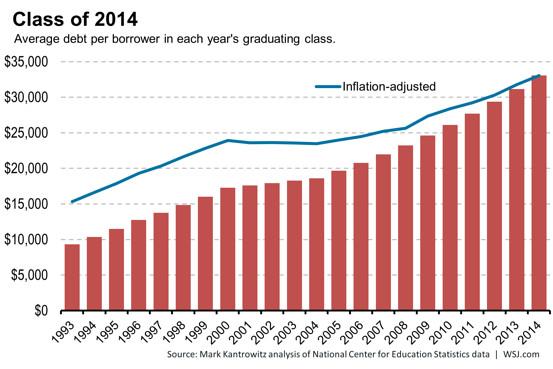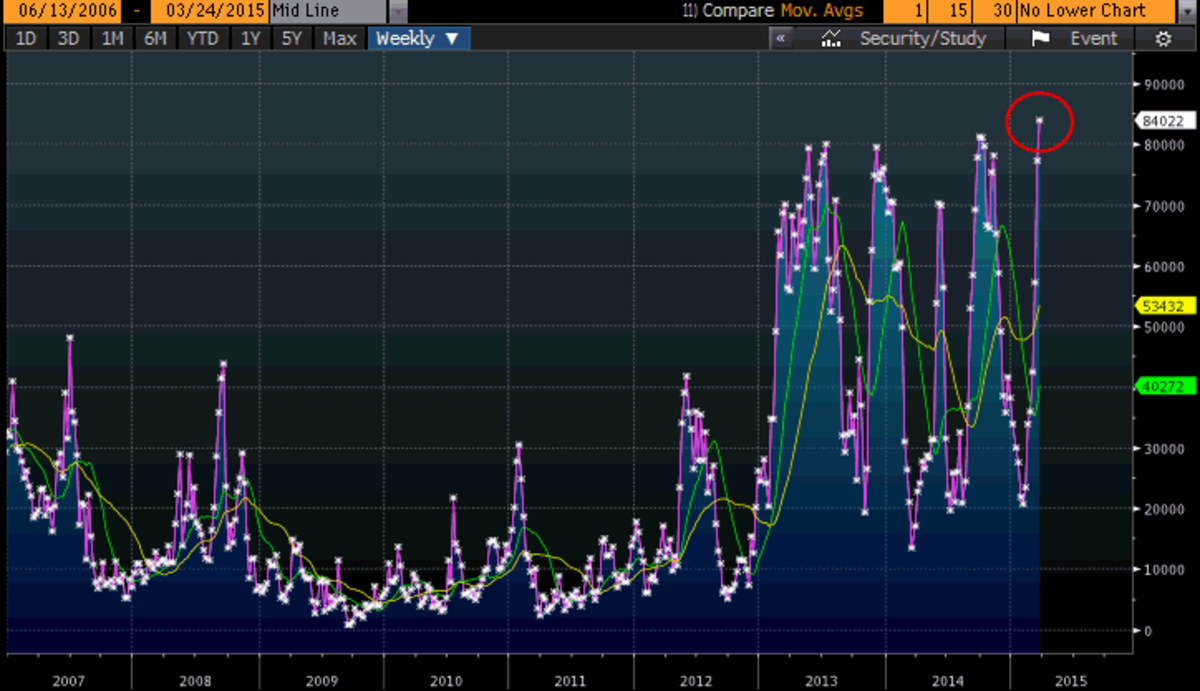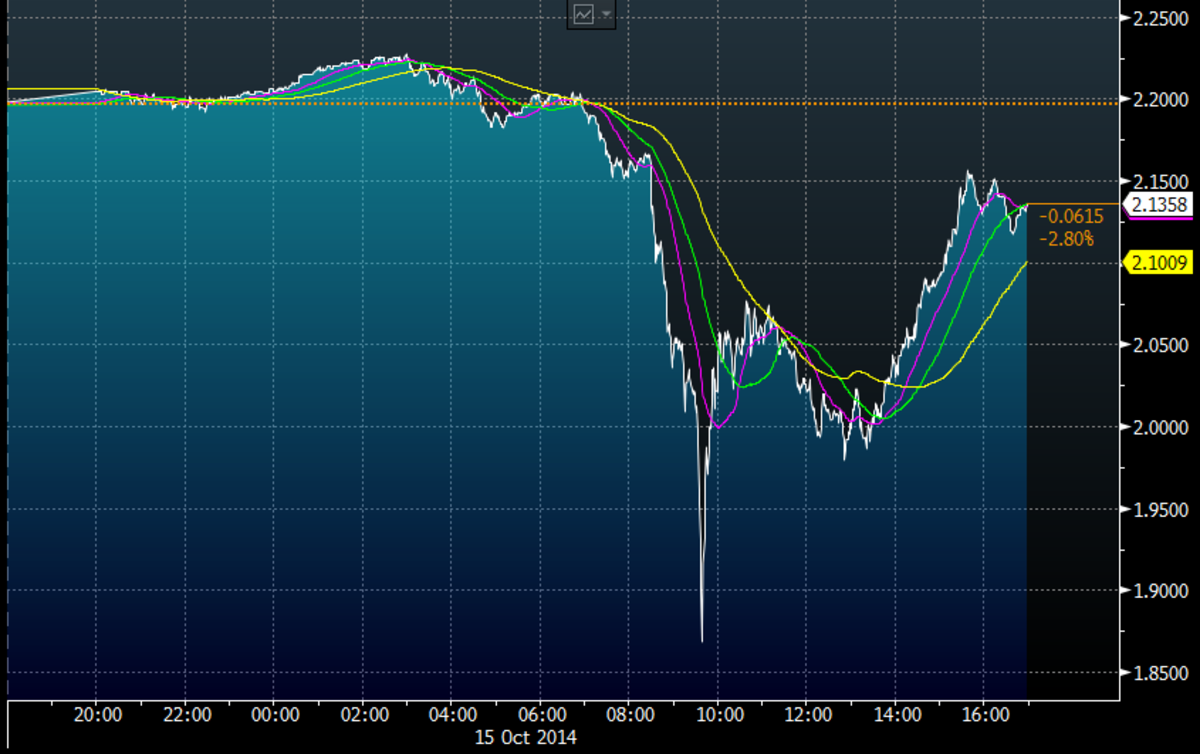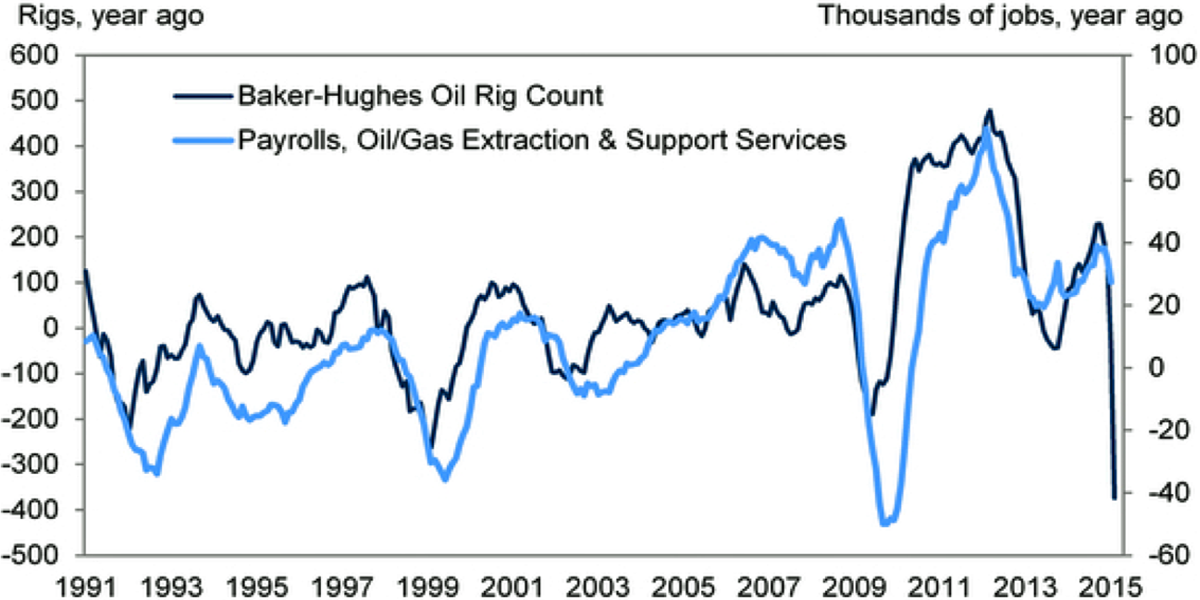by
Lance Roberts
In this past weekend’s newsletter
(click to read and subscribe for free E-delivery), I briefly touched on some corporate profit analysis that I wanted to expand on more today.
Each quarter the Bureau of Economic Analysis
releases an update
on corporate profits after tax and including inventory adjustments and
capital consumption expenditures. According to the latest report:
“Profits from current production (corporate profits with
inventory valuation adjustment (IVA) and capital consumption adjustment
(CCAdj)) decreased $30.4 billion in the fourth quarter, in contrast to an increase of $64.5 billion in the third. Profits of domestic
financial corporations decreased $12.5 billion in the fourth quarter,
in contrast to an increase of $16.1 billion in the third.Profits of domestic nonfinancial corporations increased $18.1 billion, compared with an increase of $32.0 billion. The rest-of-the-world
component of profits decreased $36.1 billion in the fourth quarter, in
contrast to an increase of $16.5 billion in the third.“
The deceleration of profitability is a concern as
stock prices struggle to move higher as of late. However, what can
corporate profitability tell us about the macro environment considering
that corporate profits are a reflection of the underlying economic
activity?
One easy way to measure this is to look at corporate profits as a
percentage of the economy. The chart below is an inflation-adjusted
series, and while this is a very rudimentary analysis, it does suggests
that corporate profitability,
as I recently quoted,is one of the most mean-reverting series in finance.
image: http://streettalklive.com/images/1dailyxchange/2015/Profit-Margins-GDP-StdDev-032315.PNG

However, there are many problems with simply
looking at corporate profitability as a measure of economic strength. In
fact, due to accounting rule changes, surges in repurchase activity and
suppressed interest rates, all of which have artificially inflated
profits, we also need to consider other measures which may more
accurately reflect what is actually occurring within the overall
economy.
Return On Equity
As stated, the problems with using corporate profits, particularly
forward estimates due to their ongoing adjustments, as a measure of
economic strength is somewhat suspect. However, a better historical
measure has been Return On Equity or ROE.
ROE is the amount of
net income returned as a percentage of shareholders equity and measures a corporation’s underlying
health
image: http://images.intellitxt.com/ast/adTypes/icon1.png
 by revealing how much profit a company generates with the money shareholders have invested
by revealing how much profit a company generates with the money shareholders have invested.
In other words, looking just at
“profits” does not tell us
much. However, ROE tells us much more about the underlying usage of
those profits from reinvestment to the recycling of capital into
dividends and share buybacks. The following chart shows the metric from
1949 through 2014.
image: http://streettalklive.com/images/1newsletter/2015/032715/Profits-ROE-032715.PNG

Historically, when there has been a plunge in
corporate ROE, a recession has been on the horizon. This makes complete
sense as, due to a continued slow growth economy, the expected return
from invested capital has fallen to a level that deters corporate
appetites.
It is worth noting that the reversion in ROE is occurring from the send highest level in post-WWII history.
Corporate Profits & Dividend
James Montier, via GMO, previously wrote a macro analysis of profits entitled
“What Goes Up, Must Come Down” is which he discussed the rather obscure Kalecki profit equation.
“After all, profits are a residual; they are the
remainder after the factors of production have been paid. Thus, it can
comfortably be argued that the left-hand side of the equation is
determined by the right-hand side.
The equation can be generalized to an economy that does have a
government sector and in which international trade occurs, and in which
the corporate sector does pay some of its profi ts to the household
sector. To spare the reader from potentially terminal boredom, I will
skip the derivation (to a collective sigh of relief no doubt) and merely
present the following:
[Profit] = [Investment] + [Dividends] – [Household Savings] – [Gov’t Saving] – [Foreign Saving]”
However, if we take that equation and divide it by Gross National
Product, we can get a better understanding of the relationship between
corporate profits and the economy.
[Profit/GNP] = [Investment/GNP] + [Dividends/GNP] – [Household Savings/GNP] – [Gov’t Saving/GNP] – [Foreign Saving/GNP]
image: http://images.intellitxt.com/ast/adTypes/icon1.png
 “hoard”
“hoard”
profits, rather than investing back into the economy via wages and
investment, the economy will suffer. This is because the other sectors
of the economy lose income.
Currently, both corporate profits and dividends as a function of GNP
has begun rather sharp declines as economic growth deteriorates and
corporations
“hoard” profits instead of reinvesting. Ironically, it is their
“hoarding” that is sucking the rest of the economy dry.
image: http://streettalklive.com/images/1newsletter/2015/032715/Profits-Dividends-032715.PNG

Household And Government Savings
Importantly, notice in the Kalecki equation that “household savings” and “Government Savings” are important factors. (For
the purpose of this discussion I am going to focus only on the
household savings component. However, “Government savings” is the
surplus/deficit of Government spending.)
This is because in an economy, total income must equal total expenditures. If a
company
image: http://images.intellitxt.com/ast/adTypes/icon1.png
 “hoards”
“hoards” all of its profits, pays no taxes and issues no dividends, the economy starves.
Economy = [Investment + Dividends] – [Household Savings + Government Savings + Foreign Savings]
When we look at the households share of retained profits and savings
as a percentage of GNP, an interesting picture emerges. The blue line in
the following chart shows the household savings rate as a percentage of
GNP from 1949 to 2014. The red line shows the housing savings rate as a
percentage of GNP
adjusted to reflect the household share of retained corporate profits:
image: http://streettalklive.com/images/1newsletter/2015/032715/Profits-HouseholdSavings-032715.PNG

As you can see, the red line is significantly below
its average for the period. Since the mid-1980s, it is fallen by more
than 50%. This is consistent with the surge in consumer debt that has
been used to offset declining rates of wage growth to maintain an
arguably accelerated standard of living. (The U.S. is the only economy in the world where the “poor” have a three bedroom house with a pool.)
From 2009-2013, household savings rates were on the rise. However,
over the last year, those savings rates have been drawn down sharply to
order to maintain expenditures and avert a recession in the presence of
persistently high-profit margins.
As Jesse Livermore explained:
“When you hear claims that record-high corporate profits
are coming at the cost of record low household savings, remember that
the wealth in question is ultimately fungible. When it shifts from household “saving”,
as defined in NIPA, to corporate profit, it’s not disappearing from the
household balance sheet–rather, it’s going from one part of the
household balance sheet (the bank account) to another part (the brokerage account).”
However, the magnitude of the decline suggests that families have
shifted a large chunk of their savings to maintain current economic
stability. However, such actions come at a cost, and historically have
been a leading indicator of much slower economic growth rates in the
future.
The sharp decline in real household savings rates as a percentage of
GNP also clears up the question as to why falling gasoline prices have
not spurred a sharp increase in consumption. With the majority of
households effectively living paycheck-to-paycheck any extra
“savings” is simply absorbed into maintaining a strained cost of living.
I am not suggesting that a recession is imminent. I am warning that there are a host of signs as of late,
including price momentum and internal deteriorion in the financial markets, that suggests the risks are rising.








 Americans Are Saving More, But for How Much Longer?
Americans Are Saving More, But for How Much Longer?



